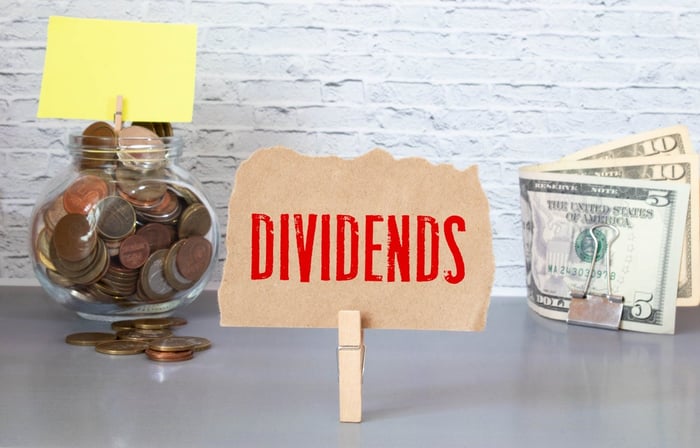High-yield dividend stocks often catch investors' attention -- and for good reason. When established companies maintain larger-than-average dividend payments, they can provide both substantial current income and the potential for long-term appreciation.
However, unusually high yields can be a double-edged sword. Sometimes, they reflect temporary market pessimism, creating genuine value opportunities. Other times, they signal legitimate concerns about a company's ability to maintain its dividend payments in the face of deteriorating business conditions.
Start Your Mornings Smarter! Wake up with Breakfast news in your inbox every market day. Sign Up For Free »

Image source: Getty Images.
In today's market, two high-profile dividend payers particularly highlight this dynamic. Pfizer (NYSE: PFE) and Altria Group (NYSE: MO) both offer yields well above their respective industry averages, with each stock trading at notably low forward earnings multiples. Their situations raise classic questions for dividend investors: Does the market's pessimism create opportunity, or are the risks too great?
I'll examine how these two dividend heavyweights compare to determine which stock offers the better opportunity for income-focused investors today.
A pharmaceutical giant in transition
Pfizer, one of the world's largest pharmaceutical companies, is known for developing breakthrough medicines and vaccines and currently yields 6.53%. This stands well above its large-cap pharmaceutical-peer average of 4.2%, while the stock trades at just 9x forward earnings. The company's payout ratio, defined as the percentage of earnings paid out as dividends, sits at 221%, so it's currently paying more in dividends than it earns.
However, it's far from cutting its dividend. On Dec. 12, Pfizer's board of directors approved an increase in the quarterly cash dividend to $0.43 per share, marking its 345th consecutive quarterly payment. According to CEO Albert Bourla, this increase reflects "strong financial performance, disciplined execution, and our commitment to returning value to shareholders."
Several upcoming key pipeline developments in 2025 could prove critical to the drugmaker's long-term financial performance and ability to sustain its rather generous dividend program. Specifically, Pfizer is expected to release once-daily dosing data for its obesity drug candidate danuglipron early in 2025, while multiple oncology programs are set to report results next year, as well.
Pfizer's ability to maintain and grow its dividend appears stronger than the payout ratio alone would suggest. While the company's transition beyond COVID-19 revenue creates near-term pressure, management's confidence in raising the dividend, combined with potential pipeline catalysts and strategic moves like the Seagen acquisition, paint a more encouraging picture for income investors.
A tobacco leader facing industry evolution
Altria, the largest U.S. tobacco company and maker of the iconic Marlboro brand, yields an impressive 7.58%, exceeding its tobacco peer average of 6.7%. This high yield is supported by a more manageable 67.3% payout ratio, while the stock trades at just 10.1 times forward earnings.
The U.S. cigarette market has faced persistent headwinds, with volumes declining 6% annually from 2018 to 2023, significantly worse than theglobal markets 1% annual decline. However, Altria's Marlboro brand commands over 40% market share, providing crucial pricing power. What's more, Morningstar analyst Kristoffer Inton expects U.S. volume declines to moderate to about 5% annually as vaping competition moderates.
While cigarettes will remain dominant at nearly 90% of Altria's projected 2028 revenue, Altria has renewed its push into alternative products. The company's acquisition of NJOY for $2.75 billion marks its return to vaping, complementing its smokeless tobacco and nicotine-pouch offerings. Importantly, cigarettes remain relatively affordable in the U.S. market, suggesting there's room for continued price increases to offset volume declines.
Better buy?
For income investors weighing these opportunities, Altria emerges as the better choice despite Pfizer's recent dividend increase. While both companies have demonstrated commitments to their dividends, Altria's fundamentals paint a more encouraging picture from a dividend-sustainability standpoint.
Its 67.3% payout ratio also offers significantly more cushion than Pfizer's 221%, and its pricing power has consistently offset volume declines. As a result, Altria scans as the better high-yield play in this head-to-head match-up.
Should you invest $1,000 in Pfizer right now?
Before you buy stock in Pfizer, consider this:
The Motley Fool Stock Advisor analyst team just identified what they believe are the 10 best stocks for investors to buy now… and Pfizer wasn’t one of them. The 10 stocks that made the cut could produce monster returns in the coming years.
Consider when Nvidia made this list on April 15, 2005... if you invested $1,000 at the time of our recommendation, you’d have $859,342!*
Stock Advisor provides investors with an easy-to-follow blueprint for success, including guidance on building a portfolio, regular updates from analysts, and two new stock picks each month. The Stock Advisor service has more than quadrupled the return of S&P 500 since 2002*.
*Stock Advisor returns as of December 23, 2024
George Budwell has positions in Pfizer. The Motley Fool has positions in and recommends Pfizer. The Motley Fool has a disclosure policy.
The views and opinions expressed herein are the views and opinions of the author and do not necessarily reflect those of Nasdaq, Inc.


